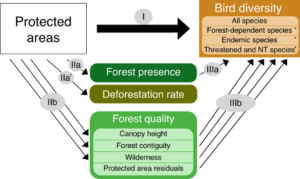Protected Areas in Preserving Biodiversity. Protected areas are critical components in the global effort to preserve biodiversity. These designated regions, which include national parks, wildlife reserves, and marine protected areas, provide safe havens for species, ecosystems, and genetic diversity. By limiting human activities within these zones, protected areas ensure that natural processes continue without interference, allowing flora and fauna to thrive.
Safeguarding Habitats and Ecosystems
The primary function of protected areas is to safeguard habitats and ecosystems that are essential for species’ survival. These areas are carefully selected based on their ecological significance, often housing rare or endangered species. By preserving these critical habitats, protected areas maintain the natural balance that supports biodiversity.

In addition to protecting specific species, these areas contribute to the overall health of ecosystems. They provide a space where natural processes, such as pollination, nutrient cycling, and predator-prey interactions, can occur without human disturbance. This holistic approach ensures that entire ecosystems remain intact, supporting a wide range of species.
Conservation of Genetic Diversity
Protected areas play a crucial role in conserving genetic diversity, which is vital for species’ adaptability and resilience. Genetic diversity allows species to evolve in response to environmental changes, diseases, and other challenges. Without it, species are at a higher risk of extinction.
By maintaining populations of various species within protected areas, these regions serve as genetic reservoirs. This conservation of genetic material is essential for the long-term survival of species, particularly in the face of climate change and other global threats.
Supporting Species Migration and Interbreeding
Connectivity between protected areas is another key factor in preserving biodiversity. Species often require large, continuous habitats to migrate, find food, and interbreed. Protected areas often serve as core zones within larger ecological networks, providing these necessary corridors.
For example, migratory species such as birds, fish, and large mammals rely on a series of protected areas to complete their life cycles. These interconnected habitats ensure that species can move freely between different environments, maintaining healthy populations and genetic diversity.
Buffering Against Human Impact
Human activities, such as deforestation, urbanization, and pollution, are significant threats to biodiversity. Protected areas act as buffers, reducing the impact of these activities on natural ecosystems. By restricting or prohibiting harmful practices within their boundaries, protected areas minimize habitat destruction, overexploitation, and pollution.
Moreover, these areas often provide opportunities for sustainable tourism and education, raising awareness about the importance of biodiversity conservation. This balance between protection and human interaction helps to foster a sense of stewardship among local communities and visitors.
Challenges in Managing Protected Areas
While protected areas are essential for biodiversity conservation, they are not without challenges. One significant issue is the need for adequate funding and resources to manage these areas effectively. Without proper management, protected areas can become degraded, losing their ability to support biodiversity.
Another challenge is the potential for human-wildlife conflict, particularly in regions where communities depend on natural resources. In such cases, it is crucial to involve local populations in conservation efforts, ensuring that their needs are met while protecting biodiversity.
The Future of Protected Areas
As global environmental challenges intensify, the role of protected areas in preserving biodiversity will become even more critical. Expanding and connecting these areas, particularly in regions with high biodiversity, will be essential for sustaining ecosystems and species.
Additionally, incorporating protected areas into broader conservation strategies, such as landscape-level planning and climate change adaptation, will help to enhance their effectiveness. By integrating protected areas into a larger framework, we can ensure that these regions continue to serve as strongholds for biodiversity in the face of growing threats.
Conclusion
Protected areas are indispensable in the fight to preserve biodiversity. They provide safe havens for species, conserve genetic diversity, and buffer against the impacts of human activities. Despite the challenges in managing these areas, their role in safeguarding our planet’s natural heritage is undeniable. By continuing to support and expand protected areas, we can help ensure that biodiversity thrives for generations to come.
